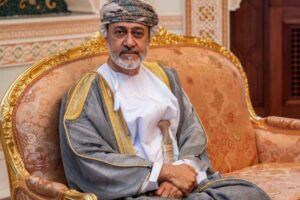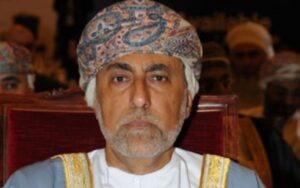Oman, officially known as the Sultanate of Oman, has had a unique political structure since its inception, characterized by an absolute monarchy. The role of the Prime Minister in Oman has traditionally been held by the Sultan, who oversees the government and its functions. Below is a table listing the Prime Ministers of Oman, their tenure, and some notable achievements and downsides of their leadership.
| Name | Tenure Start | Tenure End |
|---|---|---|
| Tariq bin Taimur | 1970 | 1972 |
| Qaboos bin Said | 1970 | 2020 |
| Haitham bin Tariq | 2020 | Present |
READ ALSO: Presidents That Have Ruled Turkmenistan Till Date
First Prime Minister: Tariq bin Taimur

Tariq bin Taimur served as the first Prime Minister of Oman from 1970 to 1972. His appointment came during a significant transition period in Oman’s history, following the overthrow of Sultan Said bin Taimur by his son, Sultan Qaboos. Tariq was instrumental in laying the groundwork for modern governance in Oman.
Tariq bin Taimur hailed from the Omani royal family. Before his tenure as Prime Minister, he held various positions within the government, including Minister of Foreign Affairs. His extensive diplomatic experience helped him navigate the complexities of Oman’s foreign relations during a time of significant change.
Notable Achievements and Downsides
During his brief tenure, Tariq bin Taimur established modern governance structures that would serve as a foundation for future administrations. However, his time in office was short, and many critics argue that his impact was limited due to the rapid changes occurring in the country.
READ ALSO: Presidents That Have Ruled Singapore Till Date
Current Prime Minister: Haitham bin Tariq

Haitham bin Tariq became the Sultan and Prime Minister of Oman in January 2020, succeeding Sultan Qaboos, who ruled for nearly five decades. Haitham’s ascension marked a new era for Oman, as he focused on economic diversification and modernization.
Haitham bin Tariq is a member of the Al Said royal family and is a cousin of the late Sultan Qaboos. Before becoming Sultan, he served as the Minister of Heritage and Culture, where he was involved in promoting Omani culture and heritage.
His background in cultural affairs has influenced his approach to governance, emphasizing the importance of cultural identity alongside modernization.
Notable Achievements and Downsides
Since taking office, Sultan Haitham has initiated several reforms aimed at modernizing the economy and reducing dependence on oil revenues. His government has focused on the “Vision 2040” development initiative, which seeks to enhance economic diversification and improve public services.
However, he has faced challenges in establishing his authority and implementing these ambitious reforms, particularly in the context of regional instability and economic pressures.
READ ALSO: Presidents That Have Ruled Singapore Till Date
Current Deputy Prime Minister: Shihab bin Tariq

Shihab bin Tariq, the brother of Sultan Haitham, currently serves as the Deputy Prime Minister for Defense Affairs. This position was created to enhance the governance structure and streamline the defense ministry’s operations.
Shihab bin Tariq is also a member of the royal family and has held various roles within the government. His previous positions include serving as the head of the Omani delegation to the United Nations and other international forums, where he gained valuable experience in diplomacy and defense matters.
Notable Achievements and Downsides
As Deputy Prime Minister, Shihab has been pivotal in overseeing Oman’s defense policies and ensuring national security. His appointment reflects a strategic move to consolidate defense responsibilities within the royal family.
However, like his brother, he faces challenges in navigating the complexities of regional security dynamics and maintaining Oman’s traditional neutral stance in regional conflicts.
READ ALSO: Presidents That Have Ruled Palestine Till Date
Conclusion
The role of the Prime Minister in Oman has evolved significantly since the country’s inception. The leadership of Sultan Qaboos was marked by significant modernization and development, while Sultan Haitham was focused on economic diversification and reform.
The contributions of Tariq bin Taimur laid the groundwork for modern governance, but the challenges faced by current leaders highlight the ongoing complexities of governing in a rapidly changing world.
